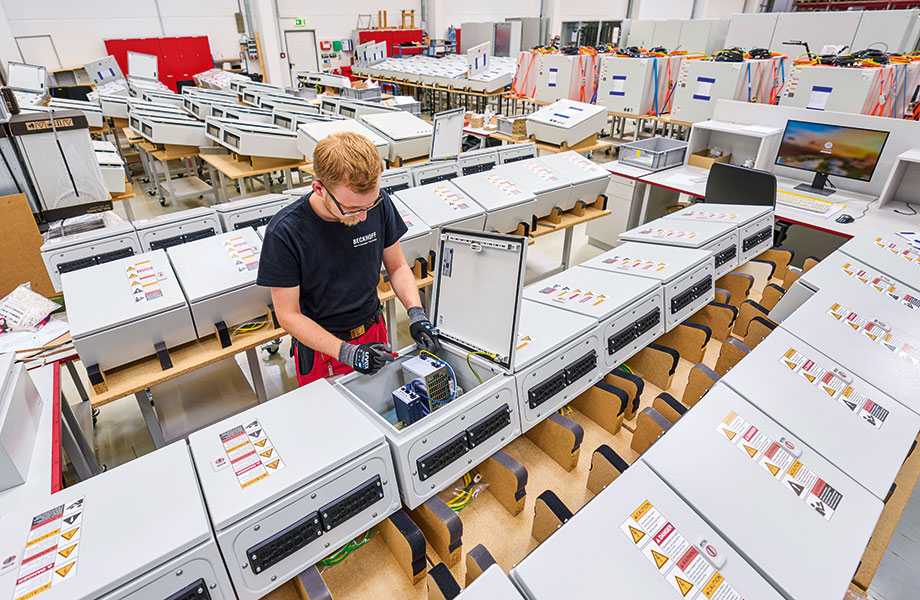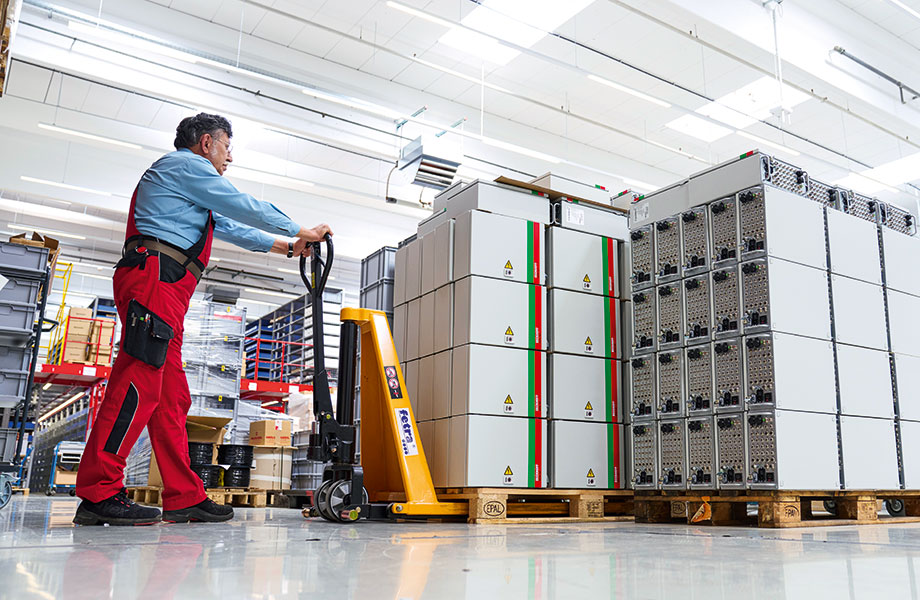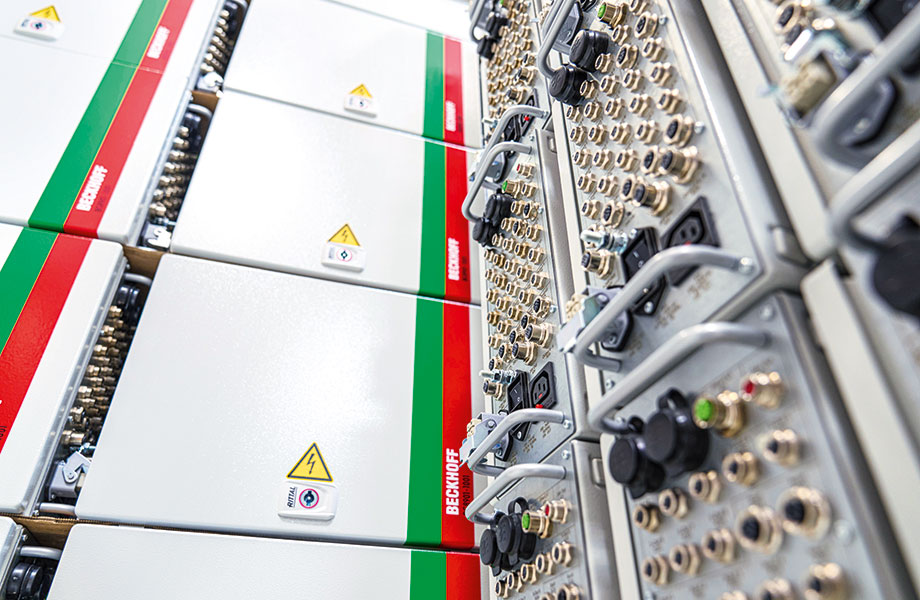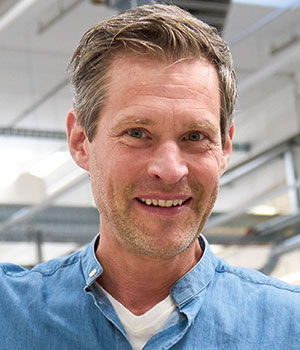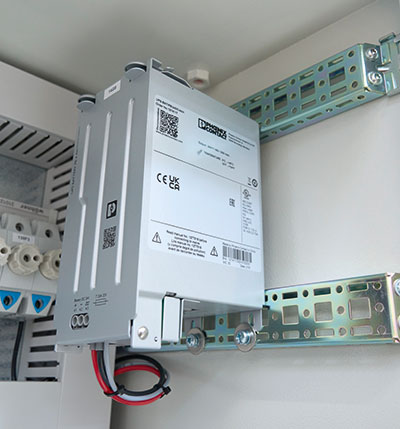Text Dr. Jörg Lantzsch ––– Photography
A company with more than 40 years of experience in switchgear manufacturing can still be surprised from time to time. “Series production involving three-figure volumes each week was not an everyday occurrence back when this project was initiated six years ago,” recalls Maik Gretenkord from the Beckhoff System Engineering team, who is responsible for the project. The customer enquiry related to the manufacture of controllers for thousands of inspection machines that were to be used for quality control in a consumer electronics production operation.
ENCLOSURE CONSTRUCTION IS THE NUCLEUS
One of the world’s leading specialists in automation and control technology, Beckhoff Automation GmbH & Co. KG has been using PC-based control technology as a foundation for producing innovative automation systems since 1980. What few people know, though, is that the original nucleus of the owner-managed family business with around 6,000 employees is its System Engineering department. A production area of 10,000 m² is devoted to this department alone, and Beckhoff currently has 350 staff working there, 150 of them engineers.
CONCEPT WITH A STANDARD BOX
Before the project started, the specialists at Beckhoff suggested an ingenious approach to its customer – using just one type of “generic” control box to house the controls of the more than 20 different types of inspection machines, which are also built by different system integrators. The idea behind this was to use a standardised design to make series production simpler. At the heart of the control box is a Beckhoff controller with appropriate bus terminals. This is accompanied by a power pack, a number of electrical engineering components and a large number of plug-in connectors that can be used to connect all the different kinds of machines. The program on the Beckhoff controller is then the only thing that needs to be changed in each case to adapt to the various types of machine.
“The need to make the challenging series production of the control box as efficient as possible placed high demands on the suppliers involved,” explains Gretenkord.
“We had to ensure our suppliers would be able to reliably deliver the necessary components in sufficient volumes,” he adds. In the case of the Beckhoff controllers and terminals, the company was able to prioritise its in-house deliveries. For the components obtained from external suppliers, absolute delivery reliability was vital. When it came to the enclosure technology, Beckhoff opted for Rittal – and for the benefits of the KX enclosure.
ALREADY MACHINED AND ASSEMBLED
For efficiency reasons, enclosure machining work – such as drilling holes for the connection technology – was outsourced to the enclosure supplier Rittal from the outset. In large-scale production, there is no time for subsequent machining. The switchgear manufacturer therefore relied on the ability of Rittal as a strong partner to deliver the enclosures already machined and assembled. The compact enclosures thus arrive at Beckhoff with numerous holes already drilled in their side panels. “It was an exciting time when we started series production,” says Gretenkord. “My colleagues and I moved our desks into the production building so that we would always have everything under control and be able to take decisions quickly,” he adds. Each and every production step was optimised – from fitting the components on the mounting plate and wiring them up through to installing the configured mounting plate in the enclosure. What’s more, various options were examined in each case. “We also considered cellular manufacturing, for instance, where all steps take place at a single location. That proved not to be feasible, though, because production immediately grinds to a halt if a part isn’t available on time,” explains Gretenkord by way of example.
The optimisation focused not only on internal workflows, but also on the components used. For example, it became apparent that the location of the earthing bolt in the KX enclosures was difficult to access once the components were installed. “Rittal was able to relocate the earthing bolts in the enclosure,” reveals Gretenkord, who is impressed by this cooperative collaboration and also emphasises just how much Beckhoff trusts its supplier. “Everything had to be done very quickly. We tested the prototypes with the relocated earthing bolts and simultaneously placed the production orders with Rittal,” he explains.
OVER 24,000 ENCLOSURES
Over the course of the project that started a few years ago, Beckhoff has now produced and delivered over 24,000 of its control boxes – especially impressive when you consider this is done on a seasonal basis, with just a few weeks of production at a time. A total of over 30 different inspection machines have been able to use the controller – clear proof of how good the original concept is. The supplier’s ability to deliver is extremely important when it comes to meeting the tight schedules. After all, Rittal has had to reliably provide several hundred enclosures each week. “The flexibility of the collaboration with Rittal – together with the other key suppliers in the project – has been outstanding. Project-specific adaptations of the enclosure would otherwise have been impossible. We have learned a great deal from this experience and can now carry out our larger projects even more reliably and efficiently. This has resulted in a high level of innovation in our entire enclosure construction operation,” sums up Gretenkord.
